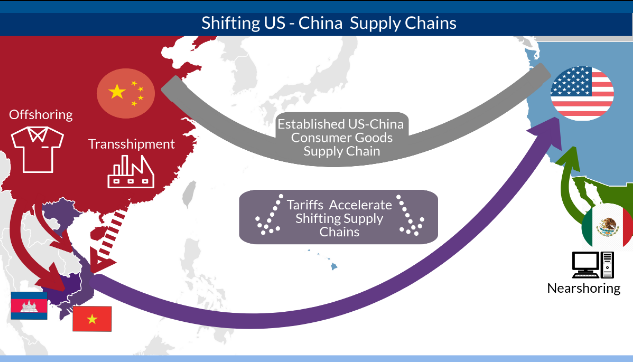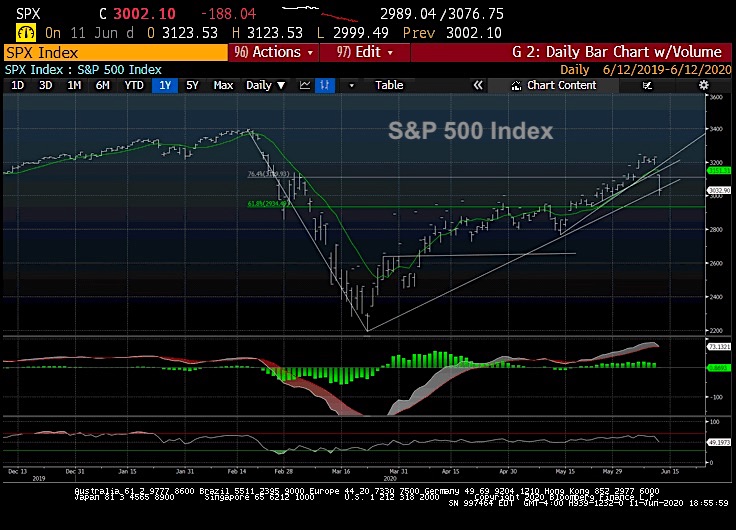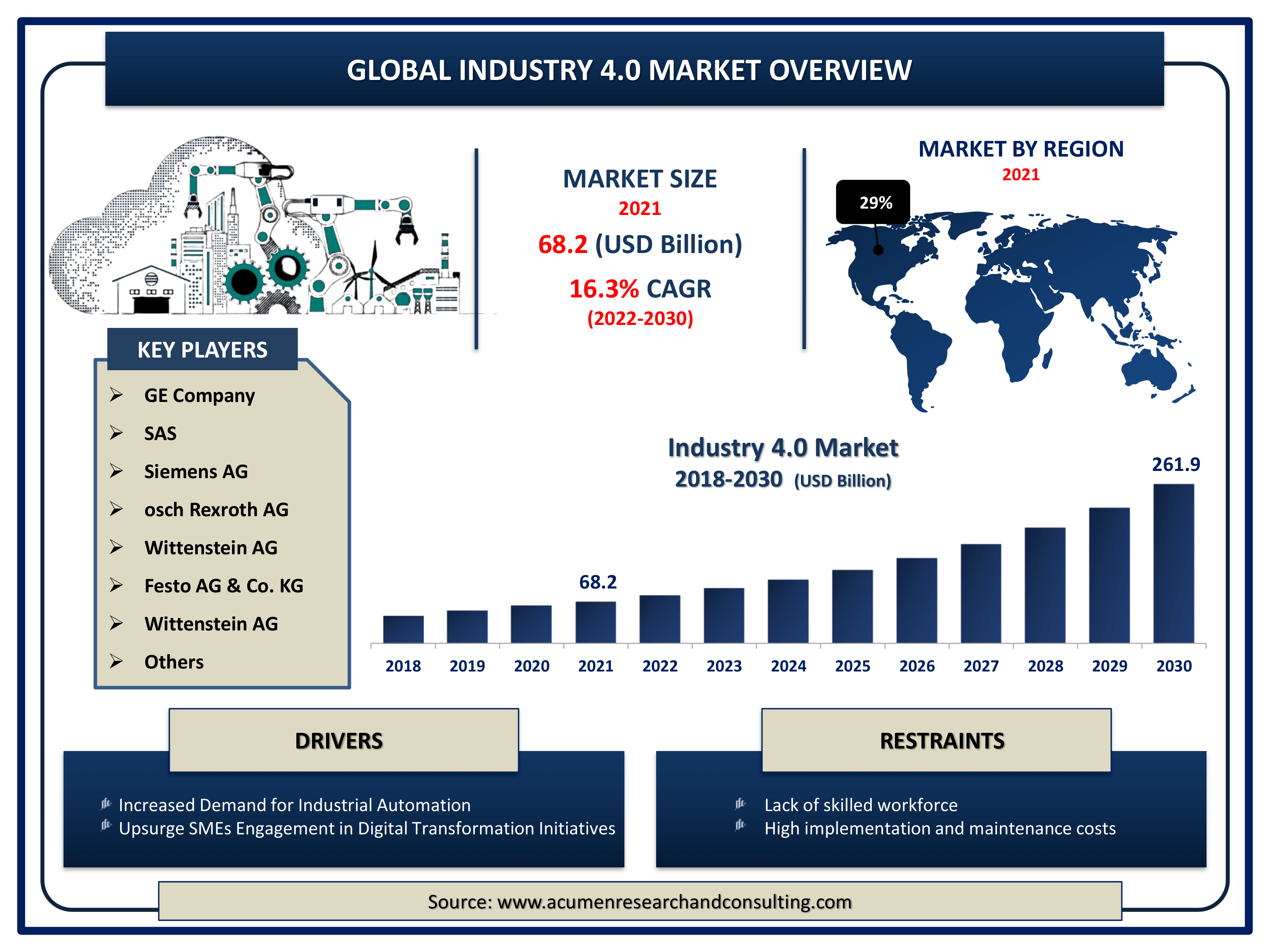Soaring US-China Trade: The Impact Of The Trade Truce

Table of Contents
The Pre-Truce Landscape: Understanding the Tensions
The period leading up to the trade truce was marked by a significant escalation of the trade war between the US and China. This period of heightened trade disputes had profound consequences for global markets.
Escalation of Trade War:
The trade war escalated gradually but dramatically. Key events included:
- 2018: The US imposed tariffs on various Chinese goods, citing concerns about intellectual property theft and unfair trade practices. These tariffs targeted sectors like steel, aluminum, and technology.
- 2019: China retaliated with its own tariffs on US goods, impacting agricultural products like soybeans and pork, as well as manufactured goods. The tit-for-tat escalation led to significant uncertainty in global markets.
- Increased Trade Disputes: Beyond tariffs, the trade conflict involved a range of disputes regarding technology transfer, state subsidies, and market access.
Economic Impact Before the Truce:
The escalating trade war had a noticeable economic impact on both countries and the global economy:
- GDP Growth Slowdown: Both the US and China experienced a slowdown in GDP growth, although the impact was felt more severely in some sectors than others.
- Inflationary Pressures: Tariffs increased the cost of goods, contributing to inflationary pressures in both countries.
- Job Losses and Uncertainty: The trade war led to job losses in industries directly affected by tariffs, creating uncertainty among businesses and investors. This uncertainty hampered investment and economic growth.
The Trade Truce: Key Agreements and Their Implications
The "trade truce" refers to a series of agreements and negotiations aimed at de-escalating the trade war between the US and China. While not resolving all issues, these agreements offered a temporary respite from escalating tensions.
Phase One Agreement:
The "Phase One" agreement, signed in January 2020, was a landmark development. Key components included:
- Tariff Reductions: China committed to reducing some tariffs on US goods.
- Agricultural Purchases: China pledged to significantly increase its purchases of US agricultural products, particularly soybeans.
- Intellectual Property Protections: China agreed to enhance protections for US intellectual property rights. This was a significant point of contention before the truce.
Subsequent Developments:
Despite the Phase One agreement, significant challenges and unresolved issues remain:
- Ongoing Negotiations: Subsequent negotiations have addressed issues like technology transfer, state subsidies, and market access, but significant disagreements persist.
- New Tariffs and Restrictions: While some tariffs have been reduced, new tariffs and trade restrictions have also been implemented, highlighting the ongoing tension in the US-China trade relationship. The relationship remains volatile.
Impact on Key Sectors: Winners and Losers
The trade truce, and the preceding trade war, had a varied impact on different sectors of both economies.
Technology Sector:
The technology sector has been one of the most affected by the US-China trade relationship:
- Semiconductor Industry: The trade war and resulting restrictions significantly impacted the semiconductor industry, with supply chains being disrupted and investment decisions altered. Companies faced difficulties sourcing components and navigating export controls.
- Software and Technology Companies: Software companies faced increased scrutiny, leading to challenges in accessing the Chinese market and potential difficulties in data transfer.
Agricultural Sector:
The agricultural sector experienced both positive and negative impacts:
- Soybean Exports: The Phase One agreement led to increased purchases of US soybeans by China, benefiting American farmers.
- Other Agricultural Products: While soybeans saw a boost, other agricultural products faced fluctuating demand and uncertainty due to the ongoing trade tensions.
The Future of US-China Trade: Looking Ahead
The future of US-China trade remains uncertain, despite the trade truce.
Uncertainties and Challenges:
Several key uncertainties and challenges persist:
- Geopolitical Tensions: Geopolitical tensions beyond trade, such as those related to Taiwan and human rights, continue to impact the bilateral relationship.
- Technological Rivalry: The competition between the US and China in technological innovation creates further strains on the trade relationship.
- Differing Economic Systems: The fundamental differences in the economic systems of the two countries create ongoing friction in trade negotiations.
Potential for Further Growth:
Despite the challenges, there remains potential for further growth in US-China trade:
- Areas of Cooperation: Areas of potential cooperation exist in areas such as climate change and global health.
- Investment Opportunities: Despite the political tensions, there are still significant investment opportunities in both countries.
- Growth in Specific Sectors: Certain sectors, such as renewable energy and pharmaceuticals, could experience strong growth despite the overall uncertainties.
Conclusion: The Ongoing Significance of Soaring US-China Trade
The impact of the trade truce on soaring US-China trade has been significant, but complex. While the Phase One agreement offered some relief from escalating tensions, numerous challenges remain. The relationship continues to evolve dynamically, shaped by geopolitical factors, technological competition, and differing economic systems. The future trajectory of US-China trade will depend heavily on the resolution of these ongoing issues and the willingness of both sides to find common ground. Stay updated on the ever-changing landscape of soaring US-China trade by following our blog for future insights and analysis.

Featured Posts
-
 The I O Io Showdown How Google And Open Ai Are Shaping The Future Of Tech
May 25, 2025
The I O Io Showdown How Google And Open Ai Are Shaping The Future Of Tech
May 25, 2025 -
 Pobediteli Evrovideniya Poslednie 10 Let Chto Stalo S Nimi
May 25, 2025
Pobediteli Evrovideniya Poslednie 10 Let Chto Stalo S Nimi
May 25, 2025 -
 One Dead Eleven Injured In Myrtle Beach Police Shooting Sled Investigation Underway
May 25, 2025
One Dead Eleven Injured In Myrtle Beach Police Shooting Sled Investigation Underway
May 25, 2025 -
 Zhizn I Tvorchestvo Sergeya Yurskogo K 90 Letiyu So Dnya Rozhdeniya
May 25, 2025
Zhizn I Tvorchestvo Sergeya Yurskogo K 90 Letiyu So Dnya Rozhdeniya
May 25, 2025 -
 Sharp Decline In Amsterdam Stock Index Lowest Point In Over A Year
May 25, 2025
Sharp Decline In Amsterdam Stock Index Lowest Point In Over A Year
May 25, 2025
Latest Posts
-
 Tennis Participation Report 25 Million Players Projected Nationwide By August 2024
May 25, 2025
Tennis Participation Report 25 Million Players Projected Nationwide By August 2024
May 25, 2025 -
 Zhengs Rome Return Past French Challenger To Last 16
May 25, 2025
Zhengs Rome Return Past French Challenger To Last 16
May 25, 2025 -
 New Report Nationwide Tennis Participation To Exceed 25 Million By August 2024
May 25, 2025
New Report Nationwide Tennis Participation To Exceed 25 Million By August 2024
May 25, 2025 -
 Zheng Qinwens Breakthrough Italian Open Semifinalist After Sabalenka Victory
May 25, 2025
Zheng Qinwens Breakthrough Italian Open Semifinalist After Sabalenka Victory
May 25, 2025 -
 Zheng Qinwen Triumphs Over Sabalenka At Italian Open
May 25, 2025
Zheng Qinwen Triumphs Over Sabalenka At Italian Open
May 25, 2025
